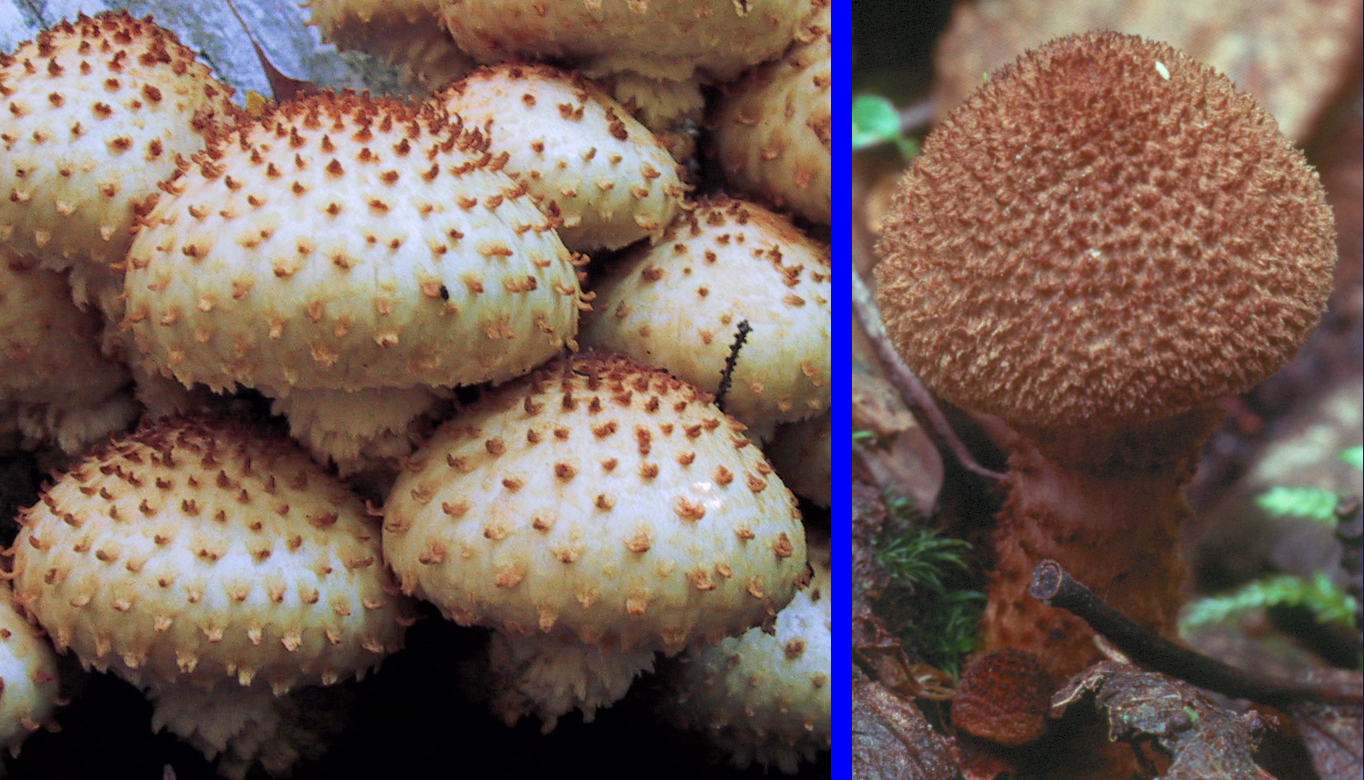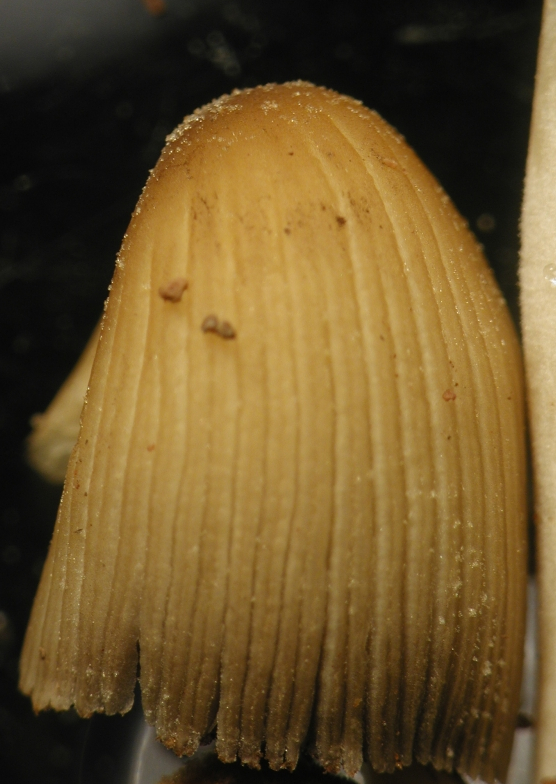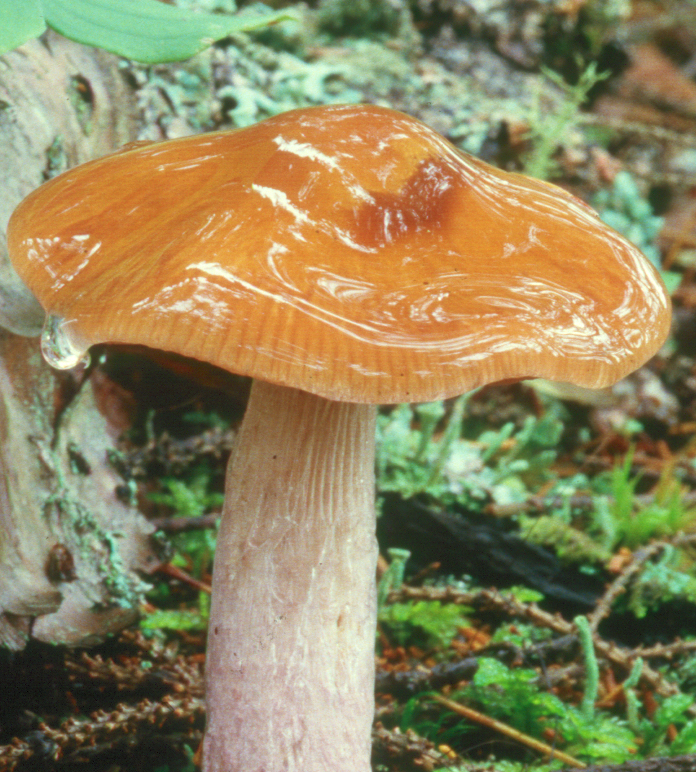PILEUS TEXTURE

The caps or pilei of mushrooms vary greatly in texture. Some maybe completely smooth as seen in the picture above left of Gymnopus dryophilus. Many, if not most, show more texture than that. Cortinarius traganus, in the second picture, has a distinctly scaly cap caused by the cracking of the surface tissues. This kind of scaliness may depend upon weather conditions and may be most apparent during dry weather. The two picture above right, of Cortinarius bolaris and Amanita flavoconia, have a scaliness caused by a covering of veil material, called a universal veil, that originally enclosed the whole mushroom, stipe and all. Not all mushrooms have a universal veil, and even those that do may not have remains of it left of the top of the pileus.

Some mushrooms may be covered with fibrils that can unite to form scales. In Cortinarius obtusus, above left, the fibrils may be appressed to the surface, forming rather rudimentary scales. Armillaria ostoyae, above centre, has more well-defined fibrillose scales while Cortinarius angelesianus, at right, is quite strongly scaly.

In reading descriptions of mushrooms you will probably encounter the term "squarrose". Squarrose scales are those that are distinctly upright and usually pointed as in Pholiota squarrosa and Cortinarius pholideus above. Both of the have scales derived from the universal veil which are also evident on the stipe.

Coprinellus micaceus, pictured at left, has a pileus with a rather grainy or mealy surface caused by the large spherical cells of the universal veil. This is not a feature you will encounter very often, except of course with C. micaceus, one of the most commonly-found mushrooms where there are dead roots of hardwood trees. The mealy surface is easily removed, either by careless handling or rain, so you may not see it immediately.
 Another facet of pileus texture is moisture. Many mushrooms, such as nearly all of those in the examples above, are dry or very slightly moist, but some can be quite slimy or viscid. Cortinarius stillatitius, at right, is an extreme example of this. It belongs to the subgenus Myxacium of the genus Cortinarius, a group characterized by slimy to gelatinous universal veil material adhering to the pileus and stipe. Other mushrooms may be less viscid than C. pseudosalor but may still be noticibly sticky, tacky or just moist. Fortunately these slimy layers are easily detected by microscopic examination of dried mushrooms, because in dry weather the slime may not be very apparent.
Another facet of pileus texture is moisture. Many mushrooms, such as nearly all of those in the examples above, are dry or very slightly moist, but some can be quite slimy or viscid. Cortinarius stillatitius, at right, is an extreme example of this. It belongs to the subgenus Myxacium of the genus Cortinarius, a group characterized by slimy to gelatinous universal veil material adhering to the pileus and stipe. Other mushrooms may be less viscid than C. pseudosalor but may still be noticibly sticky, tacky or just moist. Fortunately these slimy layers are easily detected by microscopic examination of dried mushrooms, because in dry weather the slime may not be very apparent.